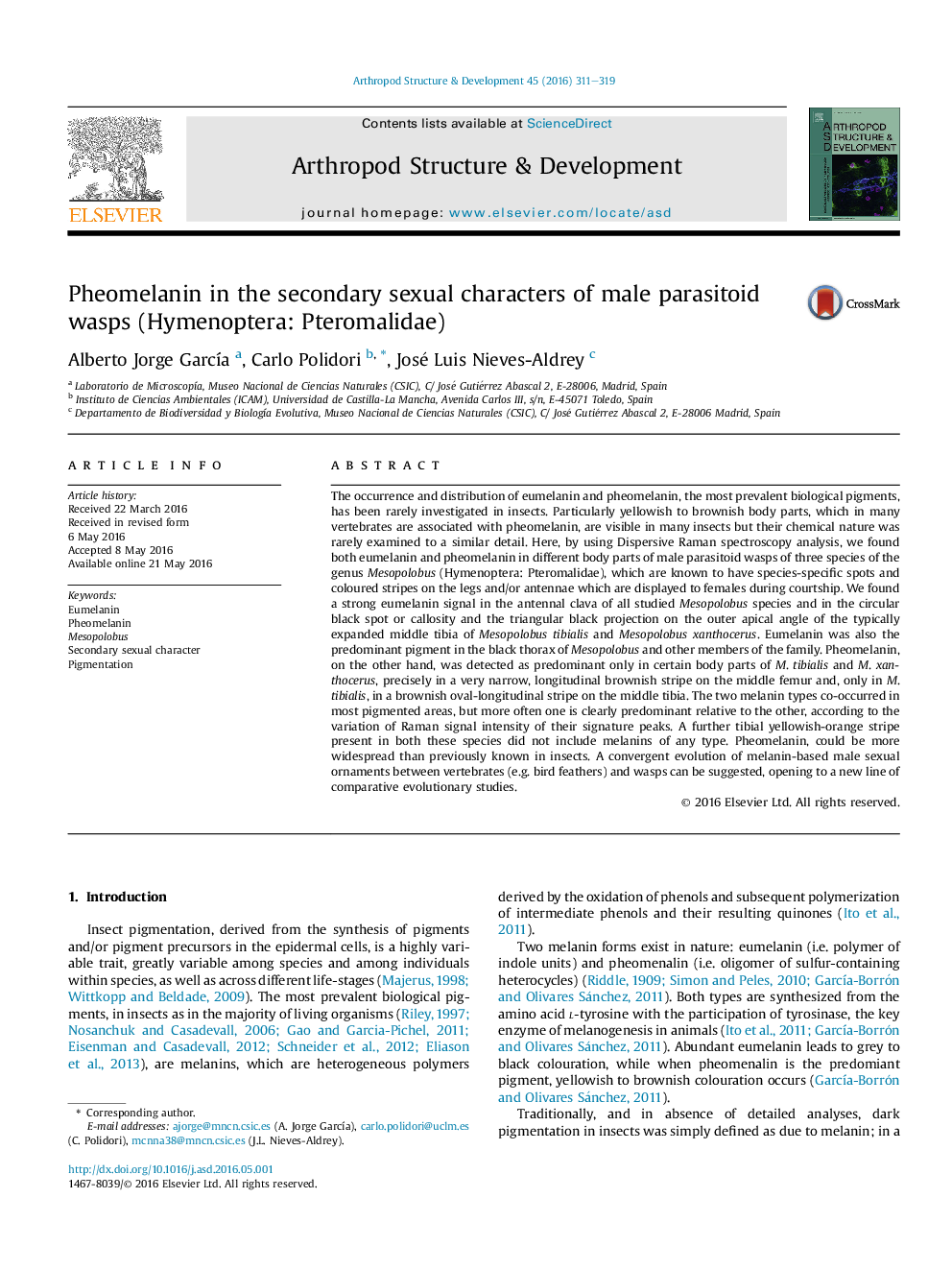| کد مقاله | کد نشریه | سال انتشار | مقاله انگلیسی | نسخه تمام متن |
|---|---|---|---|---|
| 2778476 | 1404345 | 2016 | 9 صفحه PDF | دانلود رایگان |

• We characterized for the first time melanins in wasp secondary sexual characters.
• Both eumelanin and pheomelanin occur in different body parts of males.
• Pheomelanin was predominant in brown stripes on male legs of two species.
• Pheomelanin may be more common in insects than previously believed.
The occurrence and distribution of eumelanin and pheomelanin, the most prevalent biological pigments, has been rarely investigated in insects. Particularly yellowish to brownish body parts, which in many vertebrates are associated with pheomelanin, are visible in many insects but their chemical nature was rarely examined to a similar detail. Here, by using Dispersive Raman spectroscopy analysis, we found both eumelanin and pheomelanin in different body parts of male parasitoid wasps of three species of the genus Mesopolobus (Hymenoptera: Pteromalidae), which are known to have species-specific spots and coloured stripes on the legs and/or antennae which are displayed to females during courtship. We found a strong eumelanin signal in the antennal clava of all studied Mesopolobus species and in the circular black spot or callosity and the triangular black projection on the outer apical angle of the typically expanded middle tibia of Mesopolobus tibialis and Mesopolobus xanthocerus. Eumelanin was also the predominant pigment in the black thorax of Mesopolobus and other members of the family. Pheomelanin, on the other hand, was detected as predominant only in certain body parts of M. tibialis and M. xanthocerus, precisely in a very narrow, longitudinal brownish stripe on the middle femur and, only in M. tibialis, in a brownish oval-longitudinal stripe on the middle tibia. The two melanin types co-occurred in most pigmented areas, but more often one is clearly predominant relative to the other, according to the variation of Raman signal intensity of their signature peaks. A further tibial yellowish-orange stripe present in both these species did not include melanins of any type. Pheomelanin, could be more widespread than previously known in insects. A convergent evolution of melanin-based male sexual ornaments between vertebrates (e.g. bird feathers) and wasps can be suggested, opening to a new line of comparative evolutionary studies.
Figure optionsDownload as PowerPoint slide
Journal: Arthropod Structure & Development - Volume 45, Issue 4, July 2016, Pages 311–319